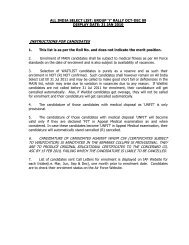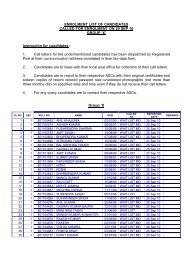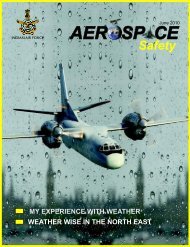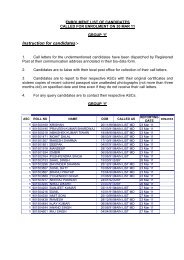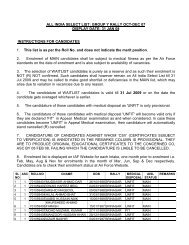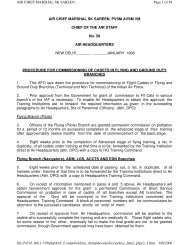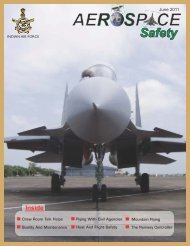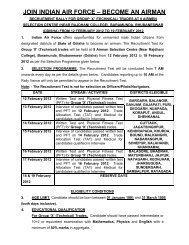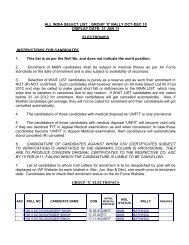Create successful ePaper yourself
Turn your PDF publications into a flip-book with our unique Google optimized e-Paper software.
At present on our couriers flying oceanic<br />
routes, the sole means of communication is the<br />
HF for obtaining weather and other information.<br />
The HF system employed suffers many limitations<br />
due to ageing and interference. This places<br />
additional work load on aircrew in terms of<br />
updating of information for diversion.<br />
Diversion. A major consideration when<br />
flying overseas is the non-availability of diversions<br />
en-route. There may only be a few routes that<br />
have an island en-route with an airfield that<br />
could serve as a diversion. Otherwise, there are<br />
none available on most of<br />
the routes. Therefore any<br />
critical emergency which<br />
otherwise requires aircraft<br />
to divert, would require<br />
ditching over sea due to lack<br />
of diversions. Calculations<br />
of Critical Point and Point of<br />
No Return assume greater<br />
significance in oceanic route<br />
flying.<br />
alike for decades. Most of<br />
the convective weather<br />
phenomena that occur<br />
over land originate over<br />
the sea. The large amount<br />
of moisture available<br />
over oceans gives rise<br />
to weather developing<br />
in a short span of time,<br />
making it unpredictable<br />
and intense in nature.<br />
Weather radar is therefore<br />
a pre-requisite on oceanic<br />
routes. Weather check<br />
through R/T from other<br />
aircraft ahead / behind<br />
on the same route also<br />
helps. Briefings must take into account sea<br />
surface temperature and lapse rate over the areas<br />
being flown as they give an idea of the build up<br />
expected.<br />
Ditching. The term ditching is synonymous<br />
with forced landing on land. Ditching is also a<br />
procedure to recover aircraft on water.<br />
The statistical chances of surviving a<br />
ditching are high. It is estimated that 88% of<br />
controlled ditchings result in few injuries to<br />
pilots or passengers. You are more likely to die<br />
Weather. Ocean<br />
climatology has always been<br />
a subject of mystery to the<br />
aviator and meteorologist<br />
14 Aerospace Safety J u n e 2 0 1 2<br />
INDIAN AIR FORCE






